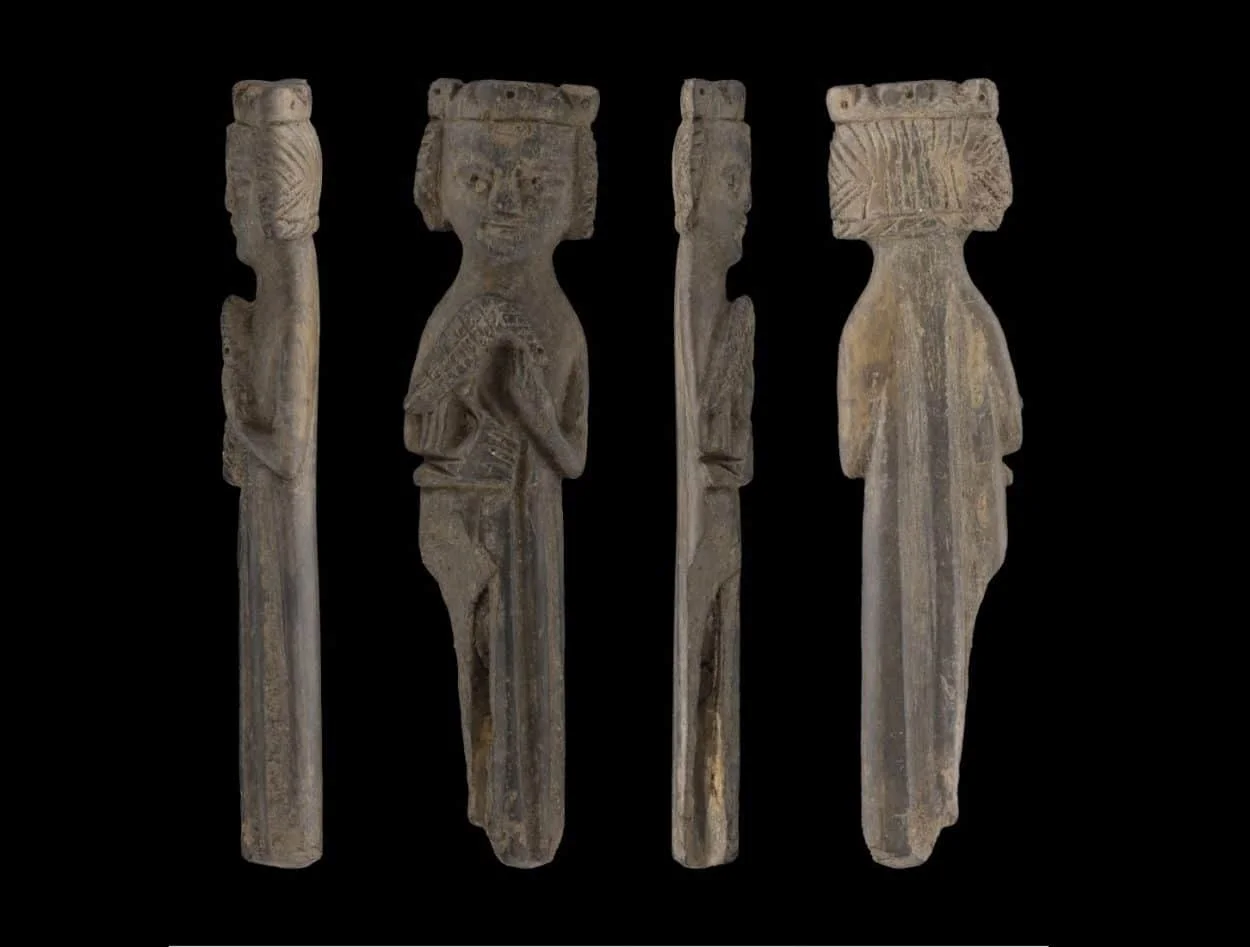A crowned figure holding a falcon has been found in Oslo’s medieval park, representing one of the earliest visual examples of falconry in Scandinavia.
The figure was discovered during excavations by the Norwegian Institute for Cultural Heritage Research (NIKU) during preparatory works for the medieval park in the Old Town of Oslo, where archaeologists have also found traces of buildings, streets, water pipes and wells.
NIKU archaeologist Ann-Ingeborg Floa Grindhaug found the figure which she first thought was a large fish bone, but upon further inspection saw the smiling face of a figure with a crown and a kestrel on its arm.
The figure is 7.5 cm long and is made of organic material, decorated on both sides, but has a somewhat flat oval cross section.
The design of clothing and hair shows that it is from the middle of the 13th century and was probably made at a workshop in Oslo.
Kjartan Hauglid, art historian and researcher at NIKU said: “There is no doubt that the figure wears a crown on its head, however, it is a little more difficult to decide whether it is a king or a queen”.
“This is among Scandinavia’s earliest visual representations of falconry, i.e., hunting with falcons. We know of only a handful of similar finds with falcon symbols in Northern Europe.” added Hauglid.
One possible theory is that the figure depicts King Håkon Håkonsson who gave falcons as a gift and even exported them. King Håkonsson was king of Norway from 1217-1263 and was known as a major player in the field of falconry.
Header Image Credit : Ann-Ingeborg Floa Grindhaug and Jani Causevic.







